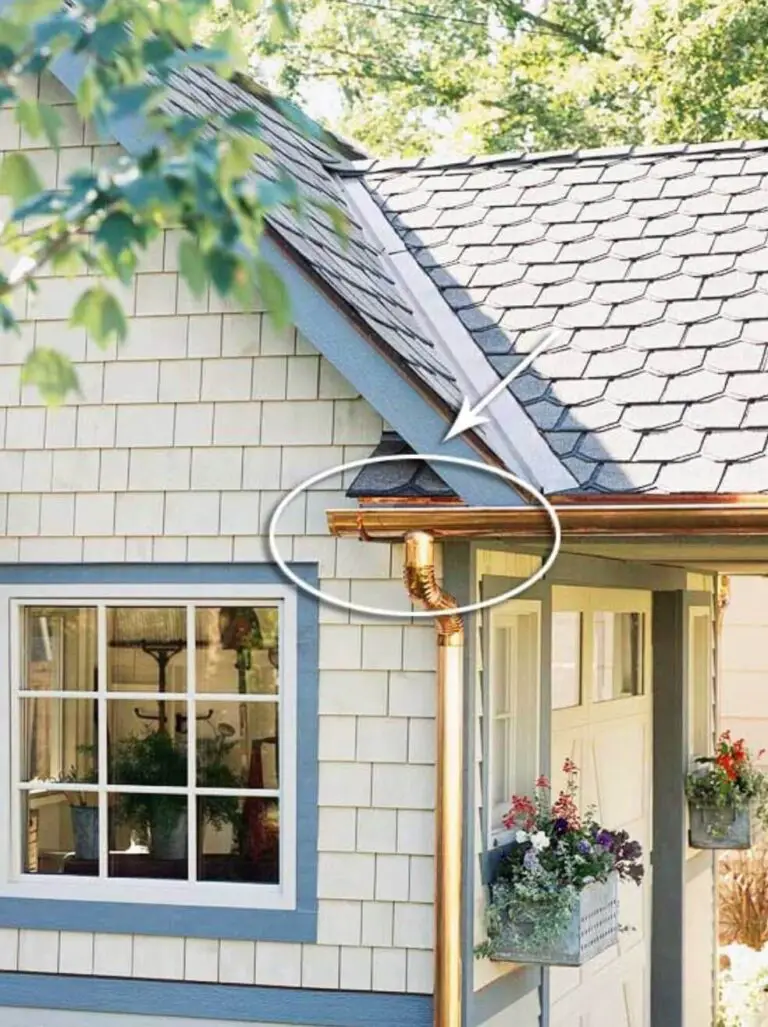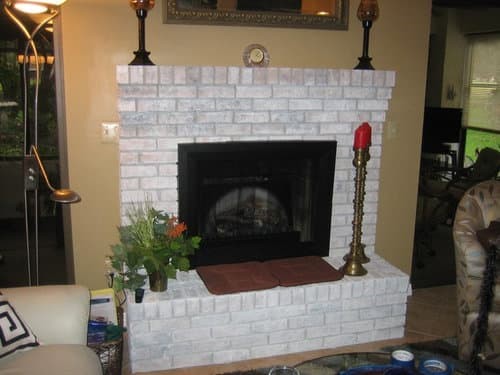12 Types Of Plumbing Pipes: The Ultimate Guide (With Pictures)
When it comes to plumbing, choosing the right type of pipe is crucial for ensuring a smooth and efficient flow of water. With so many options available, it can be overwhelming to determine which one is best suited for your needs.
In this article, we’ll delve into the world of pipes, exploring the characteristics, advantages, and disadvantages of different materials, including ABS, Black Iron, Cast Iron, CPVC, Flexi, Galvanized Steel, High-Density Polybutylene, PEX, Polybutylene, PVC, Rigid Copper, and Stainless Steel. By examining the unique features of each type, you’ll gain a deeper understanding of what to look for when selecting the perfect pipe for your plumbing system.
ABS Pipe (acrylonitrile butadiene styrene)

Home Depot enthusiasts, listen up! ABS (Acrylonitrile Butadiene Styrene) pipe is a popular choice for various plumbing needs. This versatile black plastic pipe finds its way into drainage and sewer systems, as well as venting and waste line applications. One of its standout features is the smooth inner surface, making it effortless to clean.
Why use ABS Pipe?
A notable feature of ABS pipes is their exceptional durability, which renders them impervious to the corrosive effects of chemicals, withstands high temperatures, and can withstand significant impacts without sustaining damage. Additionally, these pipes are remarkably easy to install, requiring minimal effort to set up, and thanks to their non-reactive properties, they do not corrode or degrade over time.
What are the disadvantages of ABS Pipe?
While ABS pipes are often a reliable choice, they do have some limitations when it comes to hot water applications. One issue is that they can become susceptible to cracking or breaking if exposed to freezing temperatures. In cold weather, the material itself can also lose its flexibility and become brittle, making it more prone to damage or even snapping in half.
Black Iron Pipe
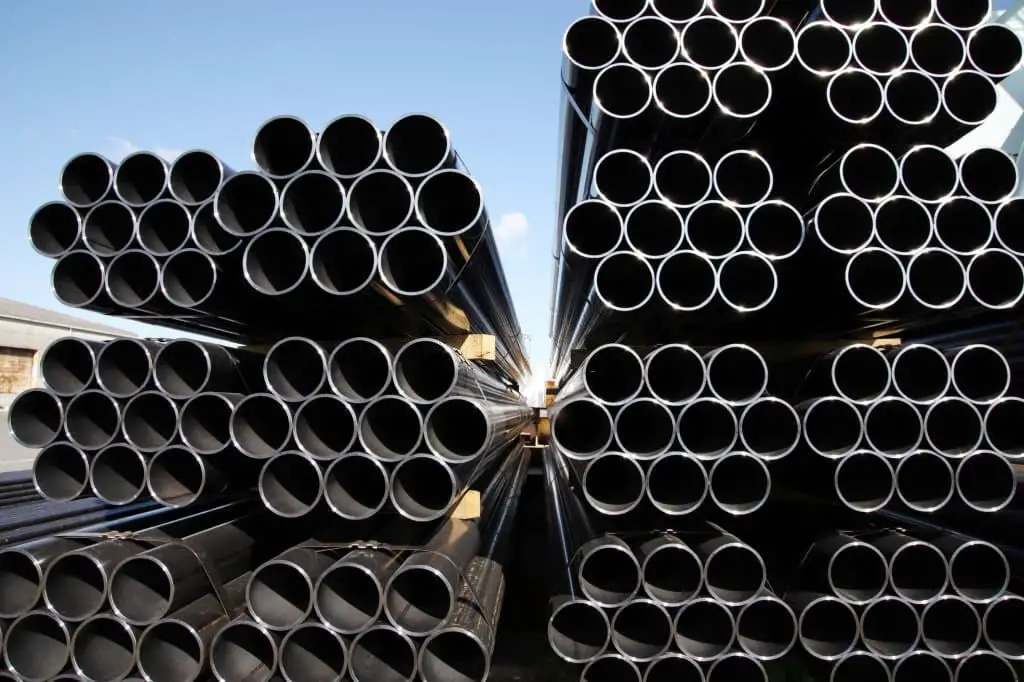
What is Black Iron Pipe?
Black iron pipe is a sturdy type of steel piping that serves as a reliable means of transporting gases and liquids. Its unique characteristic lies in its composition of wrought iron, which imparts the distinctive black hue. To enhance durability, an oil-based resin coating is applied to prevent corrosion from occurring. While it’s predominantly utilized in industrial settings like buildings and factories, black iron pipe also finds applications in residential contexts albeit less frequently.
Although it commands a higher price point compared to other plumbing pipes, its added strength and resilience justify the investment. This balance of performance and cost makes black iron pipe an attractive option for those seeking a reliable piping solution.
Advantages of Black Iron Pipes:
When it comes to the characteristics of industrial pumps, there are several key factors that set them apart from other types of equipment. For instance, they are designed to be extremely durable, capable of withstanding high pressure and temperature fluctuations without compromising their performance. Additionally, they have a remarkably long lifespan, making them a cost-effective option in the long run.
Installation is also a breeze, as they are designed to be easy to set up and get running quickly. Furthermore, these pumps are resistant to corrosion, ensuring that they will continue to operate efficiently even in harsh environments.
Disadvantages of Black Iron Pipes:
When it comes to cast iron pipes, there are some important considerations to keep in mind. For one, they require proper coating to prevent rust and corrosion from setting in. Additionally, they tend to be more expensive than other types of pipes on the market. Furthermore, their inflexibility can make them less suitable for areas prone to seismic activity, where pipes need to withstand significant movement and stress without compromising their integrity.
Cast Iron Pipe
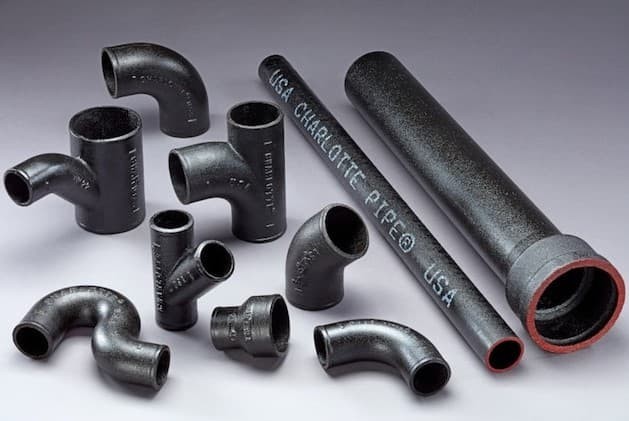
Cast iron pipes have been a staple in plumbing systems for centuries, particularly in older homes and buildings. Made from a type of metal known as cast iron, these pipes boast remarkable durability, often lasting for many years without issue. While this longevity is certainly an advantage, there are also significant drawbacks to consider. Notably, cast iron pipes can be extremely heavy, making installation a laborious and potentially hazardous task.
CPVC pipe
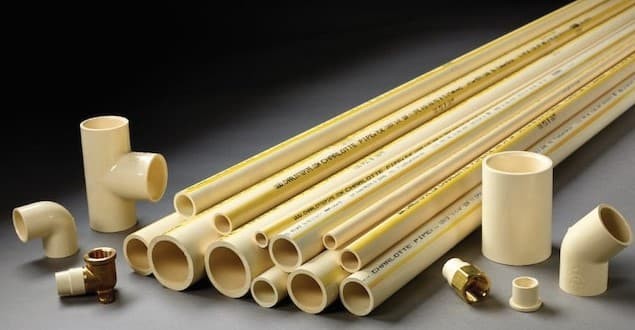
CPVC pipe is manufactured by combining polyvinyl chloride (PVC) resin with chlorine. The PVC resin, a white powder, and the chlorine gas are mixed together to form a compound that serves as the foundation for CPVC pipe production.
This type of pipe has various applications, including hot and cold potable water distribution, drain, waste, and vent (DWV) purposes. Additionally, it is used in industrial settings where corrosive chemicals need to be transported.
CPVC pipe comes in two main grades: Schedule 40 and Schedule 80. The primary distinction between these grades lies in their respective pressure ratings. While Schedule 40 CPVC can withstand pressures of up to 140 psi, Schedule 80 CPVC has a higher tolerance for pressures, capable of handling up to 200 psi.
Advantages of CPVC pipe:
CPVC pipes stand out from their metallic counterparts due to their natural resistance to corrosion. This characteristic makes them a more reliable option for various applications. Additionally, CPVC pipes are less prone to scaling and deposits, which can accumulate over time and cause issues. The installation process is also simplified as it does not require soldering or specialized tools, making it accessible to a wider range of users.
Furthermore, the lightweight nature of CPVC pipes makes them easier to handle and maneuver, reducing the risk of damage or injury during handling. With its versatility, CPVC pipe is available in a range of sizes and can be customized to fit specific installations. Its flexibility also enables it to navigate tight spaces with ease, making it an ideal choice for complex projects.
Notably, CPVC pipes are more budget-friendly compared to copper or other metallic options, making them a practical solution for those looking to balance quality with affordability.
Disadvantages of CPVC pipe:
While CPVC pipe has its advantages, it’s essential to acknowledge its limitations. One significant drawback is that it can be prone to breaking if installed incorrectly, unlike more robust metal pipes. Additionally, its heat resistance leaves much to be desired, making it unsuitable for hot water applications. Furthermore, CPVC pipe exhibits thermal expansion and contraction, which can cause issues in areas with extreme temperature fluctuations.
Lastly, its durability pales in comparison to that of metal pipes, potentially leading to a shorter lifespan.
Flexi Pipe
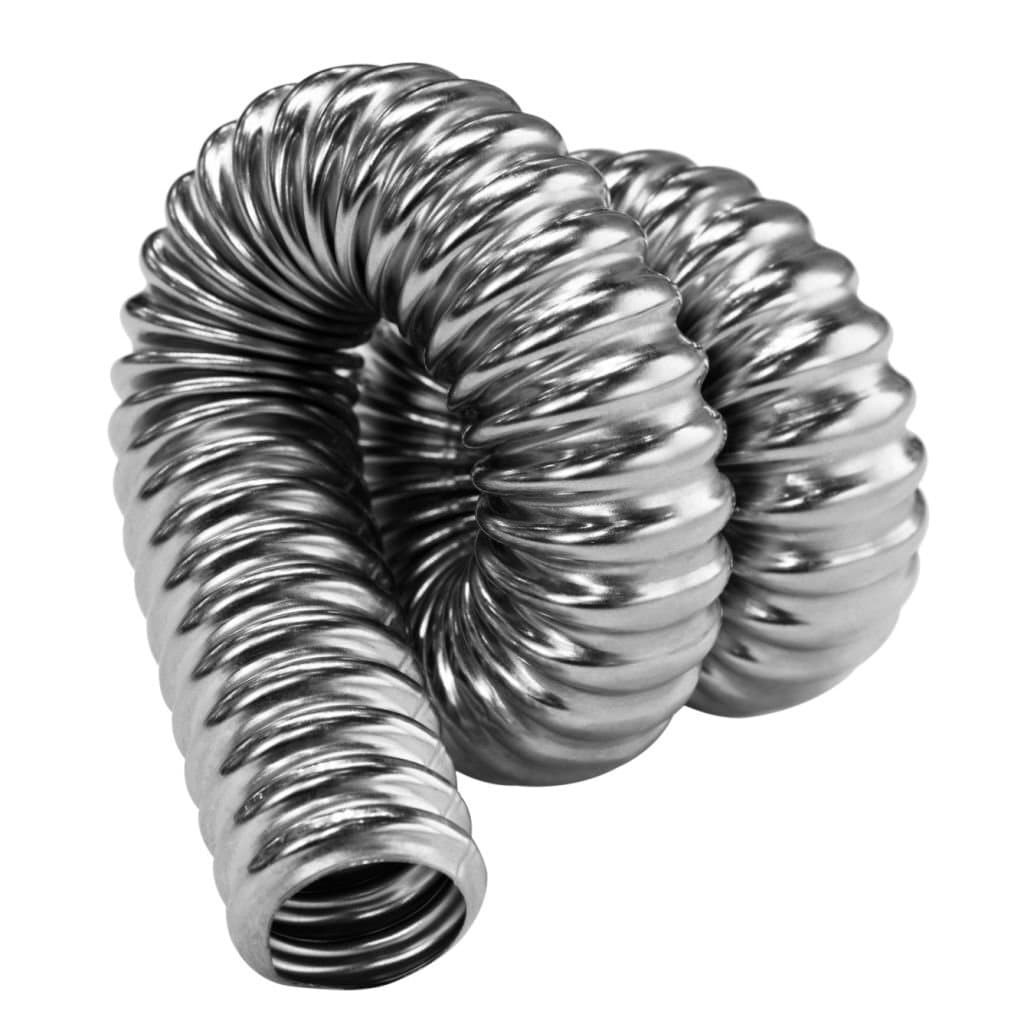
Flexi Pipe, a type of plumbing pipe, boasts a unique characteristic – its flexible nature. This adaptability makes it an ideal choice for applications that require flexibility, such as drain pipes and irrigation systems. With a range of material options at your disposal, including PVC, polyethylene, and rubber, you can select the perfect Flexi Pipe solution to suit your specific needs.
Advantages of Flexi Pipe
While other plumbing pipes may have their advantages, Flexi Pipe stands out due to its unique characteristics. One significant benefit is its increased resistance to damage – it’s much less likely to crack or break compared to traditional pipes. This makes it an excellent choice for outdoor applications where the risk of freezing and bursting is higher.
Furthermore, installing Flexi Pipe is a relatively straightforward process, as it can be easily cut to size using basic tools like saws or knives.
Disadvantages of Flexi Pipe
While Flexi Pipe offers several benefits, it’s essential to acknowledge its limitations. One significant drawback is its relative weakness compared to other pipe types, making it less suitable for applications involving high pressure. Additionally, Flexi Pipe can be a more costly option when compared to other piping materials, which may not align with the needs or budgets of some users.
Galvanized Steel Pipe
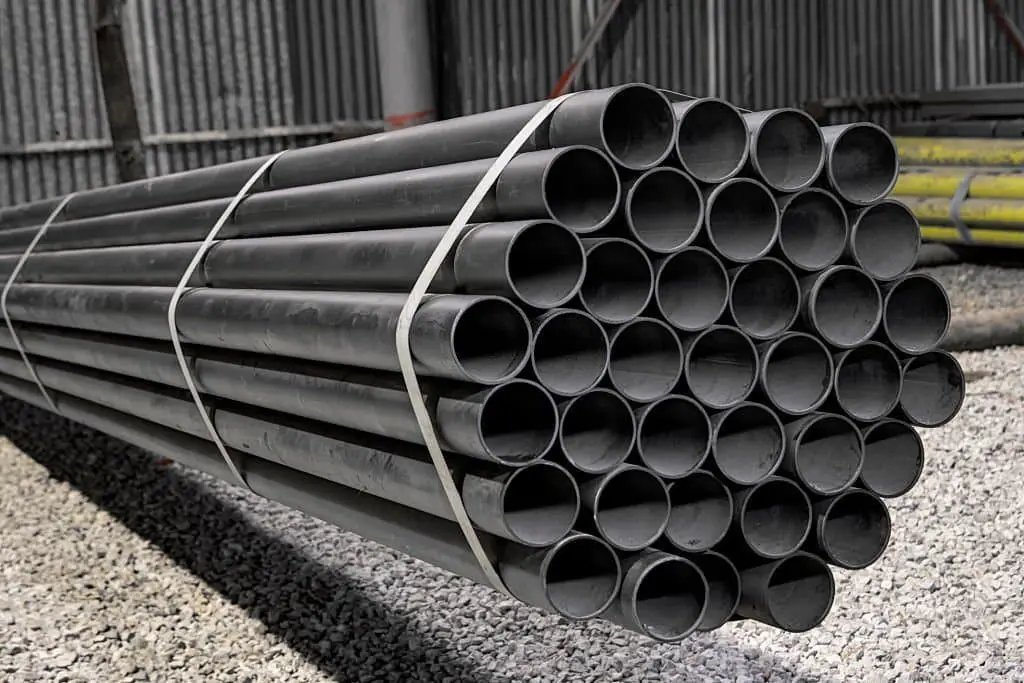
Galvanized steel pipe is a type of steel pipe that has undergone a treatment process involving a zinc coating, which serves to shield the pipe from corrosion and rust, thereby prolonging its lifespan. This durable material finds application in diverse sectors, including water supply systems, natural gas delivery networks, and oil transportation infrastructure. There exist three primary categories of galvanized steel pipes: black, hot-dipped, and pre-galvanized.
Black steel pipes are fabricated from hot-rolled coils that have been treated with a zinc coating. In contrast, hot-dipped galvanized steel pipes are immersed in a vat of molten zinc, resulting in a smooth and shiny surface. Pre-galvanized steel pipes, on the other hand, are created from hot-rolled coils that have been coated with zinc.
Advantages of Galvanized Steel Pipe:
Galvanized steel pipe stands out from the competition in terms of durability, boasting a remarkable resistance to corrosion that allows it to withstand the test of time. With its impressive lifespan, this type of pipe proves to be a cost-effective solution for various applications. In fact, galvanized steel pipe is often more affordable than other types of pipes on the market, making it an attractive option for those looking to balance quality with budget.
Disadvantages of Galvanized Steel Pipe:
While galvanized steel pipes are known for their durability and affordability, they do have some limitations that should be considered. For instance, the zinc coating can eventually wear away over time, potentially exposing the pipe to corrosion. Additionally, galvanized steel is not as flexible as other types of pipes, which may limit its use in certain applications where a high degree of flexibility is required.
Furthermore, it’s worth noting that galvanized steel pipes may not be suitable for use in extreme temperatures. However, for most plumbing applications, galvanized steel pipe remains a good choice due to its overall durability and affordability, making it a popular option among homeowners and businesses alike.
High-Density Polybutylene Pipes
High-density polybutylene pipes are a popular choice for residential and commercial plumbing due to their robust construction. Made from high-density polyethylene, these pipes boast exceptional strength and durability, rendering them highly resistant to corrosion and chemical damage. This remarkable resilience makes HDPE an excellent material for plumbing applications, where reliability is paramount.
Advantages of High-Density Polybutylene Pipes:
With the plumbing industry shifting towards more innovative solutions, high-density polybutylene pipes have emerged as a preferred choice among professionals. Their unique combination of flexibility and durability makes them an attractive option for various applications. Moreover, these pipes exhibit impressive resistance to chemicals, allowing them to thrive in both hot and cold water environments.
Furthermore, their ease of installation and minimal maintenance requirements make them a practical choice for plumbing projects.
Disadvantages of High-Density Polybutylene Pipes:
While high-density polybutylene pipes have their advantages, there are also some notable drawbacks to consider. One key consideration is that they tend to be pricier than other types of plumbing pipes, which can be a significant factor for homeowners on a budget. Furthermore, polybutylene pipes may not be universally compatible with all types and brands of fittings and fixtures, which can add complexity to the installation process.
Finally, if these pipes do become damaged or compromised in some way, they can be challenging to repair – a prospect that may not appeal to DIY enthusiasts or homeowners seeking straightforward solutions.
PEX Pipe (cross-linked polyethylene)
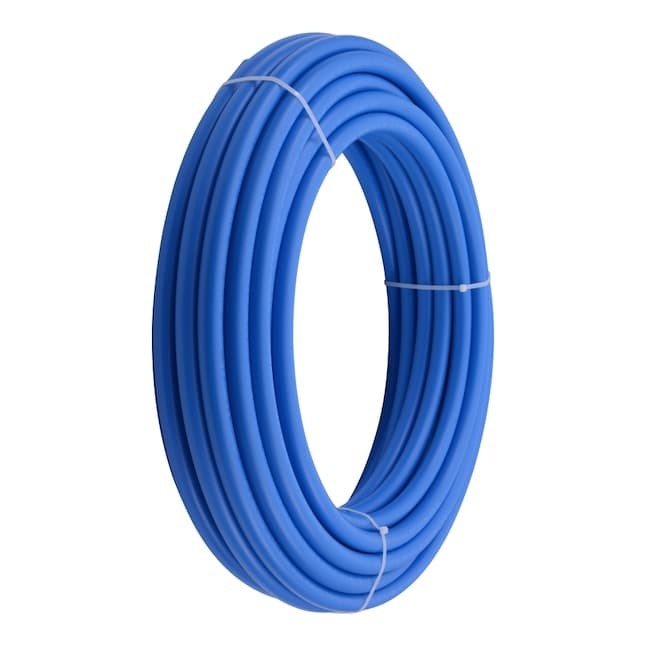
Cross-linked polyethylene (PEX) has been a staple in the manufacturing industry since the 1950s, particularly in plumbing and radiant heating applications. What sets PEX apart from other types of pipes is its versatility – it’s available in a range of sizes, from small diameter pipes to larger ones. The material that makes up PEX pipe is high-density polyethylene (HDPE), a thermoplastic resin that can be melted and reformed.
However, PEX takes HDPE a step further by chemically cross-linking its molecules. This process gives PEX its remarkable strength and flexibility, making it an ideal choice for applications where durability is crucial.
Advantages of PEX Pipe (cross-linked polyethylene):
When it comes to plumbing applications, PEX pipe stands out for its unique combination of durability and flexibility. This versatile material makes it an ideal choice for a wide range of projects, from residential renovations to commercial installations. Not only does PEX pipe offer superior performance, but it’s also surprisingly easy to install, saving you both time and money in the long run.
Furthermore, PEX pipe is naturally resistant to corrosion and scale build-up, allowing your plumbing system to operate efficiently for years to come.
What are the disadvantages of PEX pipe?
While PEX pipe offers many benefits, it’s essential to note that it may not be compatible with all fittings and connections. Furthermore, due to its composition, PEX pipe isn’t suitable for outdoor use, making it important to consider alternative options for exterior applications. Additionally, PEX pipe tends to be more costly than other types of plumbing pipes, which can impact the overall cost of a project.
Polybutylene Pipes
Polybutylene pipes, a type of plastic plumbing material, played a significant role in home construction between 1978 and 1995. Characterized by their flexibility, resistance to corrosion, and smooth interior surface, they offered numerous advantages for homeowners. One of the most notable benefits was ease of cleaning, thanks to their non-porous inner surface.
This, combined with their ability to withstand harsh environmental conditions, made them a popular choice among builders during that period.
What are the Advantages of Polybutylene Pipes?
Polybutylene pipes offer several benefits, including their flexibility, which makes them more resistant to damage and easier to install. Additionally, they possess inherent resistance to corrosion, ensuring that the pipes remain in good condition for a longer period. Furthermore, polybutylene pipes feature a smooth inner surface, allowing for efficient water flow and minimizing the risk of sediment buildup.
What are the Disadvantages of Polybutylene Pipes?
While polybutylene pipes have their advantages, they also come with several drawbacks. One major concern is that they can undergo degradation over time, becoming brittle and prone to breaking. This can lead to costly repairs and potentially even more significant issues if left unchecked. Additionally, some studies suggest that these pipes can leach chemicals into the water supply, raising health concerns for homeowners.
Furthermore, polybutylene pipes may not be compatible with certain types of plumbing fittings, making installation or replacement more complicated than it needs to be.
PVC Pipe
In the realm of plumbing, PVC (polyvinyl chloride) pipe stands out as a go-to option due to its remarkable strength and durability. This versatile material excels in various plumbing applications, thanks to its robust composition that enables it to withstand the rigors of daily use with ease.
PVC Pipe Installation
PVC pipes offer versatility when it comes to installation, allowing for a range of joining methods to suit specific applications. While glue-based bonding using PVC cement is an effective option, PVC pipe can also be connected using screw-on or weld-on fittings. This flexibility enables installers to choose the most suitable approach for their project’s unique requirements.
PVC Pipe Applications
While PVC pipe is widely utilized across various industries, its unique properties make it an ideal choice for drainage and sewer applications, where it can withstand the corrosive effects of acidic water. Moreover, its resistance to deterioration from sunlight makes it a popular option for irrigation systems as well.
Advantages of PVC Pipes:
PVC pipes boast a unique set of benefits that make them an attractive option for many piping needs. One of the most significant advantages is their affordability, making them a cost-effective choice for homeowners and professionals alike. Additionally, PVC pipes are remarkably easy to install, reducing the time and labor required to complete a project.
Furthermore, these pipes are highly resistant to corrosion and deterioration, ensuring they will withstand the test of time without compromising their integrity. The versatility of PVC pipes is also noteworthy, as they come in a wide range of sizes and lengths, making them suitable for both indoor and outdoor applications. Overall, the combination of affordability, ease of installation, durability, and adaptability makes PVC pipes an excellent choice for many piping needs.
Disadvantages of PVC Pipes:
While PVC pipes do offer several advantages, they also have a few drawbacks that should be considered. One notable limitation is their relatively lower strength compared to other types of piping, such as metal. This means they may not be suitable for high-pressure applications or projects where extreme stress is involved. Additionally, PVC pipes can be susceptible to damage caused by prolonged exposure to sunlight, which can lead to degradation and reduced lifespan.
Furthermore, cold weather can cause PVC pipes to become brittle and more prone to cracking, making them less durable in harsh winter conditions.
Rigid Copper Pipe
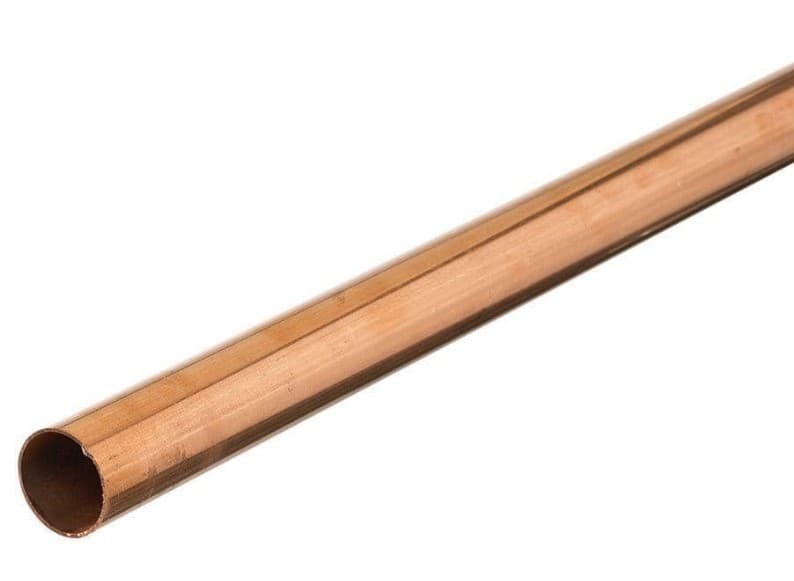
Rigid copper pipes are a staple in plumbing and HVAC (heating, ventilation, and air conditioning) systems, often employed for water supply lines and refrigerant lines. This type of pipe is fabricated from thick-walled copper tubing that retains its stiffness, allowing it to be joined together with fittings to form extensive runs of piping.
Advantages of Rigid Copper Pipe:
A standout characteristic of rigid copper pipe is its impressive resilience, capable of withstanding extreme temperatures and pressures without compromising its integrity. Additionally, this material boasts exceptional corrosion resistance, which translates to minimal upkeep requirements. The combination of these qualities makes it an attractive option for various applications.
Disadvantages of Rigid Copper Pipe:
Copper piping’s rigidity can make installation more challenging, particularly for extended lengths. This is due to the need for precise sealing at each joint connection. Moreover, copper itself is considered a pricier material compared to other options.
Stainless Steel Pipe
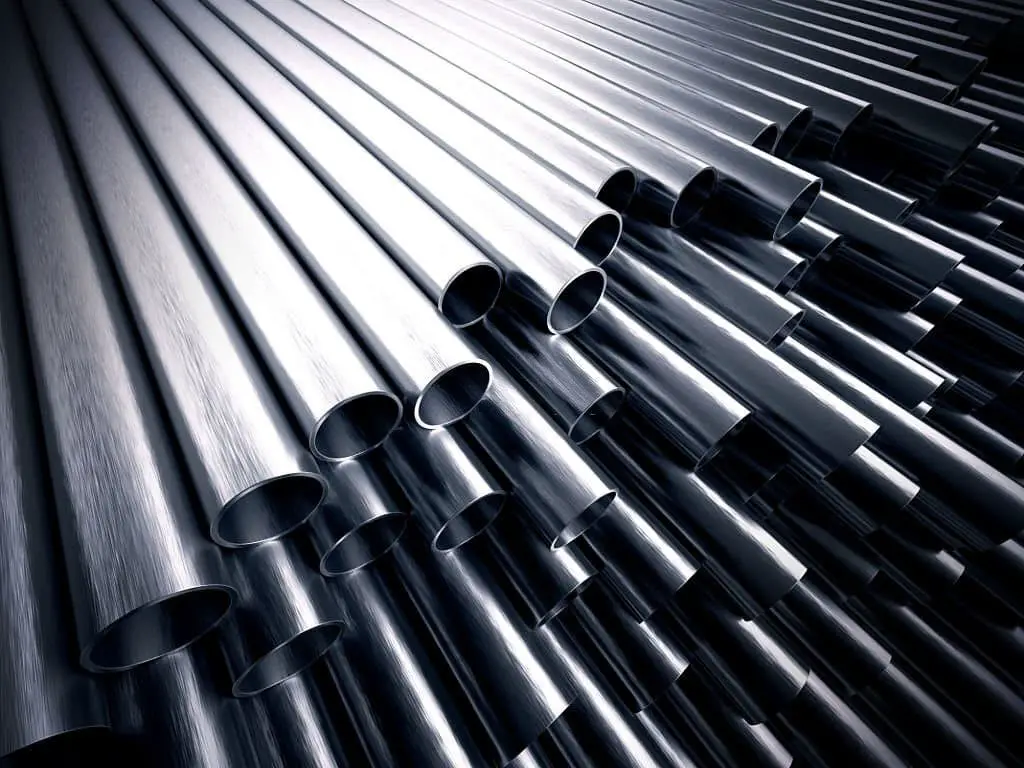
Comprising a unique blend of chromium and nickel, stainless steel pipes boast impressive corrosion-resistance capabilities, thanks to the synergistic effects of these two key alloys. This distinctive composition enables stainless steel piping to thrive in a wide range of industrial environments, including food and beverage processing, chemical processing, oil refining, and gas extraction operations.
Advantages of Stainless Steel Pipe
Stainless steel pipes boast an array of impressive advantages, setting them apart from other materials. One notable benefit is their remarkable strength and durability, making them well-suited for demanding applications. Additionally, stainless steel pipe exhibits excellent resistance to corrosion and chemical attack, reducing the risk of damage or degradation over time.
Furthermore, it demonstrates a high level of heat resistance, allowing it to withstand temperatures that would compromise other materials. The ease with which stainless steel pipes can be cleaned and maintained is another significant advantage, as well as their impressive lifespan, ensuring they remain a reliable choice for many years.
Disadvantages of Stainless Steel Pipe
While stainless steel pipes have many advantages, they also come with some notable disadvantages. Notably, they tend to be a more costly option compared to other types of piping materials. Additionally, their unique properties can make them challenging to work with and install, requiring specialized knowledge and tools. Furthermore, stainless steel pipes are not well-suited for applications that require high temperatures, as this can compromise their structural integrity and performance.
What is the most common pipe for plumbing system?
PVC pipes, made from polyvinyl chloride, are the most commonly used in plumbing due to their impressive durability and resistance to corrosion and chemicals. Their ease of installation and long lifespan make them a popular choice for both fresh water and sewage applications. While PVC is a top contender, other types of pipes have their own unique advantages and disadvantages. Copper, for instance, offers superior strength but comes at a higher cost.
Steel pipes, on the other hand, are more budget-friendly but can corrode over time. CPVC, a cheaper alternative to PVC, may not be as strong or durable. When selecting the perfect pipe for your plumbing system, it’s crucial to consider the specific needs of your home or business. A professional plumber can guide you in choosing the best option for your unique situation.
Factors to consider when buying plumbing pipes
When it comes to purchasing plumbing pipes, there are several key factors to consider. First and foremost, size is crucial. Measure the area where the pipe will be installed to ensure you purchase one that can accommodate your needs without any issues. Additionally, material plays a significant role in the quality and performance of the pipe. Plumbing pipes come in a variety of materials, including copper, PVC, and iron, each with its own unique benefits and drawbacks.
It’s essential to research these options thoroughly before making a decision. Another important consideration is cost. Plumbing pipes can vary greatly in price depending on material and size. To get the best value, it’s vital to compare prices from different retailers before making a purchase. Finally, installation is another crucial aspect to consider.
While some pipe types are easier to install than others, if you’re not comfortable with the process yourself, it may be wise to hire a professional to ensure the job is done correctly.
Conclusion
While there’s no shortage of plumbing pipes on offer, each type has its own unique characteristics that make it better suited for certain applications. The key is selecting the right one for your specific needs. A seasoned plumber can provide valuable insights to help you make an informed decision. If you’re looking for personalized advice, consider reaching out to a reputable local plumbing company to explore your options.
Related Posts
To embark on a rewarding career as a plumber, it’s essential to understand the skills and knowledge required. A skilled trade career in plumbing demands a combination of technical expertise, physical stamina, and problem-solving abilities. As you begin your journey, it’s crucial to develop a solid foundation in areas such as pipefitting, appliance installation, and water system maintenance.
Additionally, having knowledge on how to deal with home maintenance tips, specifically when dealing with water damage, is vital for any aspiring plumber. This includes understanding the importance of proper water flow, identifying signs of potential leaks, and knowing how to prevent flood damage. Furthermore, being aware of the process and benefits of hydro jetting can also prove invaluable in your future career.
With the right training and experience, you’ll be well-equipped to tackle a wide range of plumbing challenges, including septic tank cleaning and maintenance. By focusing on continuous learning and professional development, you’ll be able to excel as a plumber and provide top-notch services to homeowners like those in Brisbane.

